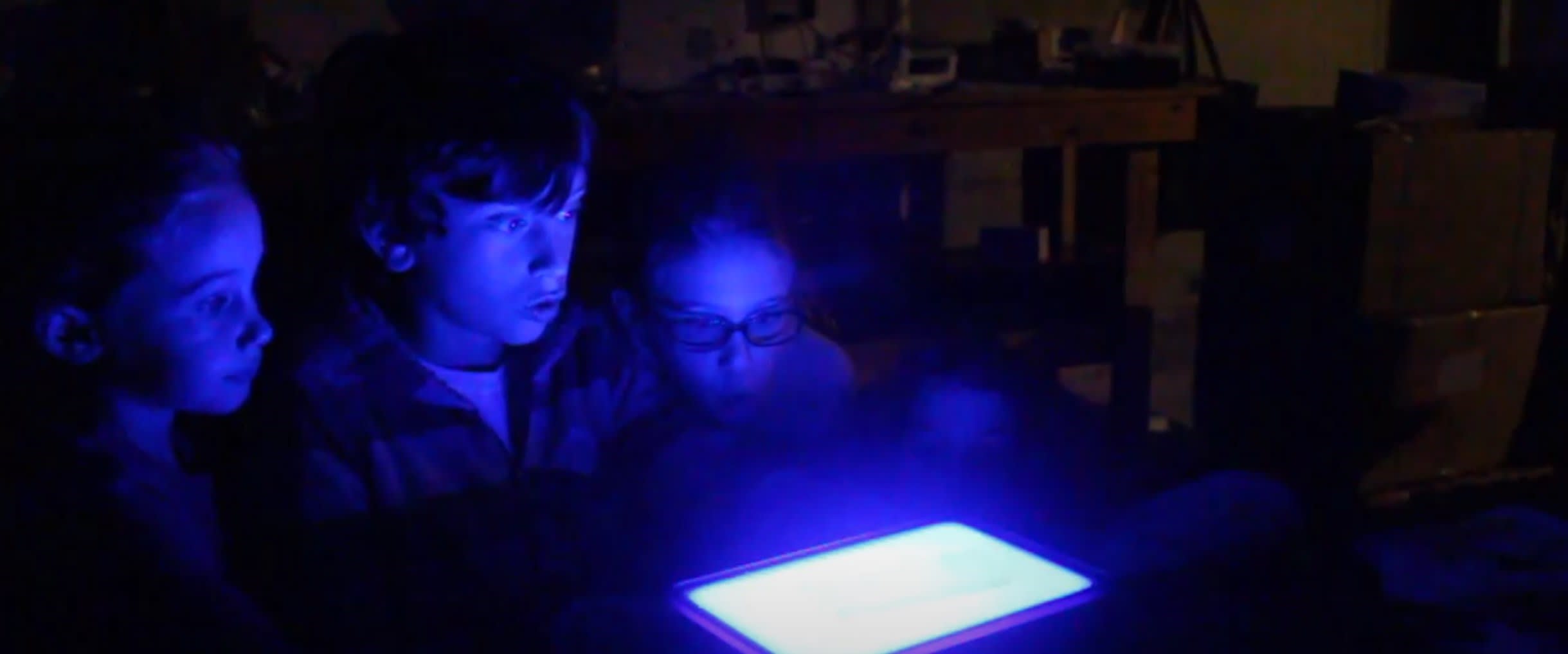Gel Electrophoresis: Tools and Tips for Classroom Success

Middle & High School
Teaching genetics can be exciting yet daunting, especially when introducing complex techniques like gel electrophoresis. However, with the right tools and resources, you can transform this challenging topic into an engaging and accessible learning experience for your students. This guide, created in partnership with miniPCR®, provides a step-by-step approach to teaching gel electrophoresis, making the process straightforward and rewarding for you and your students.
What is Gel Electrophoresis?
Gel electrophoresis is a technique for separating DNA, RNA, or proteins based on their size and charge. This method involves applying an electric current to a gel matrix, causing molecules to migrate through the gel. Smaller molecules move faster and farther than larger ones, resulting in a separation that can be visualized and analyzed, giving students a clear picture of what’s happening at a microscopic level. This teaching topic introduces students to key concepts in molecular biology, such as DNA structure, genetic variation, and protein synthesis, making abstract concepts more tangible. They will get 'charged up' about science and see how 'size really does matter' in the world of molecules.
Essential Materials for Teaching Gel Electrophoresis
To effectively teach gel electrophoresis, you'll need the following materials:
1. Gel Electrophoresis System
Here are some options:
- miniPCR® Bandit™ STEM Electrophoresis Kit: Ideal for beginners, offering a basic and cost-effective introduction to biotechnology and genetics. Best for dye electrophoresis labs.
- miniPCR® blueGel™ Electrophoresis Unit: An affordable step up that’s easy to implement. This all-in-one solution is suitable for intermediate users, with more advanced features for better results. Best for DNA electrophoresis labs and introductory to advanced biotechnology and genetics concepts. Choose from:
- Single Unit: Ideal for individual use or lab groups of up to four students.
- Set of Four with Carrying Case: Suitable for classrooms or sharing among colleagues.
- Classroom Bundles: Various bundles include multiple units and additional supplies. - miniPCR® GELATO™ Electrophoresis and Visualization System: A professional-grade system designed for advanced users, providing the best high-resolution results. It has the most advanced features delivering publication- quality gel runs, larger capacity gels, and the ability to cut out bands.
When choosing a gel electrophoresis system, consider:
- Skill Level: Systems like Bandit™ are suited for educational purposes, while GELATO™ targets professional research labs and advanced college courses.
- Budget: Bandit™ is the most economical, blueGel™ is mid-range, and GELATO™ is a premium system.
- Features: Look for built-in transilluminators, sample capacity, run time, and additional functionalities like band-cutting capability.
These factors will help align the system's capabilities with your needs and budget.
2. Reagent: Agarose Gel
Agarose Gel is made up of:
- Agarose powder
- TBE (Tris-Borate-EDTA) buffer
- GelGreen Stain for visualization (or Biotium)
Simplify the process of mixing gels with pre-measured All-in-One Agarse Tabs™.
3. Micropipettes and Tips: For loading samples into the gel wells.
4. DNA Samples: To analyze and compare.
5. Loading Dye: Helps track the progress of the electrophoresis.
Fun Facts: Reagents vs. Reactants. Reagents are added to cause a chemical reaction or test if one occurred. They are not necessarily consumed by a reaction. Reactants are starting materials that participate in a chemical reaction and are consumed to make products.
Step-by-Step Guide to Teaching Gel Electrophoresis

1. Prepare the Gel:
- Traditional Method: Mix agarose powder with TBE buffer, heat to dissolve, and pour into a gel casting tray.
- All-in-One Agarose Tabs™ Simply dissolve the tablet in water and pour. This method is hassle-free and perfect for beginners.
2. Set Up the Electrophoresis Equipment:
- Place the solidified gel into the electrophoresis chamber.
- Fill the chamber with TBE buffer until the gel is submerged.
3. Load the DNA Samples:
- Mix DNA samples with loading dye. The miniPCR® systems come premixed with loading dye.
- Carefully pipette the mixture into the wells of the gel.
4. Run the Gel:
- Connect the electrophoresis chamber to the power supply.
- Set the appropriate voltage (for the GELATO™) and run the gel until the dye has migrated sufficiently. Bandit™ and blueGel™ run at a fixed voltage, so they don’t need to be set.
5. Visualize the Results:
- After the run, remove the gel and visualize the DNA bands using a UV transilluminator or blue light system. The miniPCR® systems accomplish this directly during the run, so a separate transilluminator is not required.
Refer to the “How to Pour Gel” video for a visual guide. The video shows three gel pouring methods using All-in-One Agarose Tabs to help you find the best process for your lab!
Making Gel Electrophoresis Easier with miniPCR® Products
Preparing and running gels using the traditional method can be quite time-consuming and challenging, especially for teachers who are new to the process. This is where miniPCR® products can make a big difference:
- User-Friendly Systems: miniPCR® offers a range of gel electrophoresis systems tailored to different experience levels. Whether you choose the Bandit™ for beginners, the blueGel™ for intermediates, or the professional-grade GELATO™, these systems simplify the process and enhance learning.
- All-in-One Gel Tablets: miniPCR®'s all-in-one gel tablets eliminate the hassle of measuring and mixing reagents. These pre-measured tablets ensure consistent results and save valuable classroom time.
- Educational Resources: miniPCR® provides various learning labs and worksheets to support your lesson plans. These include:
|
Beginner |
Intermediate miniPCR® Electrophoresis Forensics Lab: Wrongfully Convicted |
Advanced |
Bonus: Check out MiniPCR's Gel Electrophoresis Basics Worksheet - To guide students through the process.
These predesigned activities can be used with any equipment.
Gel electrophoresis is a powerful tool for teaching genetics, offering students hands-on experience with a fundamental technique used in molecular biology. Explore the range of miniPCR systems and resources today to enhance your genetics curriculum, so your lesson will really gel with students!
